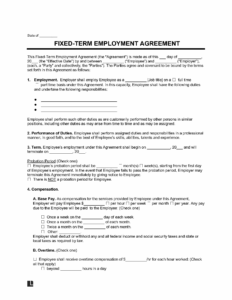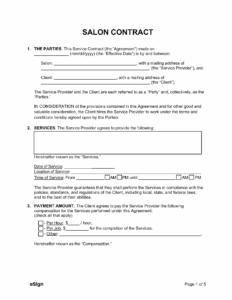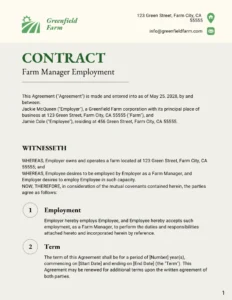Navigating the world of employment agreements can feel a bit like walking through a legal maze. For businesses, protecting proprietary information, client lists, and specialized knowledge is absolutely crucial in today’s competitive landscape. That’s where non-compete agreements come into play, serving as a vital tool to safeguard interests and prevent former employees from immediately jumping ship to a direct competitor, taking valuable insights with them.
For both employers drafting these documents and employees asked to sign them, understanding the intricacies of a non-compete is paramount. It’s not just about preventing competition; it’s about setting clear boundaries and ensuring fair play. A well-crafted agreement can prevent future headaches and costly litigation, making it essential to start with a solid foundation.
What Exactly is a Non-Compete Agreement?
At its core, a non-compete agreement is a contractual clause or an entire document that restricts an employee from entering into competition with an employer after their employment period ends. This typically involves preventing them from working for a rival company, starting a similar business, or soliciting the former employer’s clients or employees within a specific geographical area and for a defined period. The primary goal for an employer is to protect legitimate business interests, such as trade secrets, confidential information, customer relationships, and specialized training investments.
These agreements are most commonly seen in industries where competition is fierce and proprietary knowledge holds significant value. Think high-tech companies, sales organizations, executive roles, or businesses with highly specialized services. Without such safeguards, a business could invest heavily in an employee’s training or expose them to sensitive information, only to have that investment walk out the door and be used against them almost immediately.
However, it’s not a blanket tool to prevent any form of future employment. For a non-compete to be enforceable, it must be “reasonable” in its scope. This reasonableness is usually assessed by courts based on several key components, ensuring that the restrictions aren’t overly broad or burdensome to the employee’s ability to earn a living.
Key Elements to Consider When Drafting
- Scope of restricted activities: What specific roles or industries is the former employee prohibited from engaging in? This should be narrowly tailored to the employer’s actual business interests.
- Geographic limitations: What is the specific area where the employee cannot compete? This should correspond to the employer’s actual market or operational reach.
- Duration: For how long after employment ends does the restriction apply? This period should be justifiable in protecting the business interest without being indefinite.
- Consideration: What does the employee receive in exchange for agreeing to the non-compete? This could be the offer of employment itself, continued employment, or a separate payment.
- Governing law: Which state’s laws will govern the interpretation and enforcement of the agreement? This is critical as non-compete laws vary significantly by state.
The enforceability of non-competes is a dynamic and evolving area of law. Many states have specific statutes governing them, and courts often scrutinize them heavily to ensure they do not unduly restrict an individual’s right to work. There’s also a growing national conversation, with proposals like the one from the Federal Trade Commission aiming to ban most non-compete clauses, which could significantly alter the landscape. Therefore, staying updated on legal developments is crucial.
This legal complexity underscores why using a well-structured non compete employment contract template is so valuable. It provides a foundational framework that can then be customized to fit specific circumstances and comply with relevant state laws, significantly reducing the risk of an unenforceable or problematic agreement.
Best Practices for Using a Non-Compete Template
While a non-compete employment contract template offers an excellent starting point, it’s crucial to understand that it’s not a one-size-fits-all solution. Copy-pasting without careful thought and customization can lead to an agreement that is either unenforceable or, worse, detrimental to your business interests. Every business is unique, as is every employment relationship, and the template should serve as a guide rather than a final document.
The most critical best practice is to always, without exception, seek legal counsel. Non-compete laws vary wildly from state to state, and what is enforceable in California might be completely invalid in Florida, or vice-versa. An attorney specializing in employment law can help tailor the template to your specific needs, ensuring it complies with local regulations, stands up in court if challenged, and truly protects your legitimate business interests without being overly broad.
Another vital consideration is the concept of “consideration.” For a non-compete agreement to be legally binding, there must be something of value exchanged between the employer and the employee. If you present a non-compete to a new hire, the job offer itself typically serves as consideration. However, if you introduce a non-compete to an existing employee, you may need to provide additional consideration, such as a bonus, a raise, a promotion, or a specific payment, to make the agreement legally sound.
Transparency with your employees is also paramount. Presenting a non-compete agreement clearly, explaining its purpose, and allowing the employee adequate time to review it (and ideally, seek their own legal advice) can foster a better employment relationship and reduce the likelihood of disputes later on. Rushing an employee or burying the clause in other documents can be viewed unfavorably by courts.
Ultimately, a non-compete is a serious legal document with significant implications for both parties. Its primary purpose is to protect an employer’s vital assets and competitive edge. By starting with a robust non compete employment contract template and then meticulously customizing it with expert legal guidance, businesses can establish clear, enforceable boundaries that safeguard their future while respecting employee rights. This thoughtful approach ensures that these agreements serve their intended purpose effectively and fairly.



